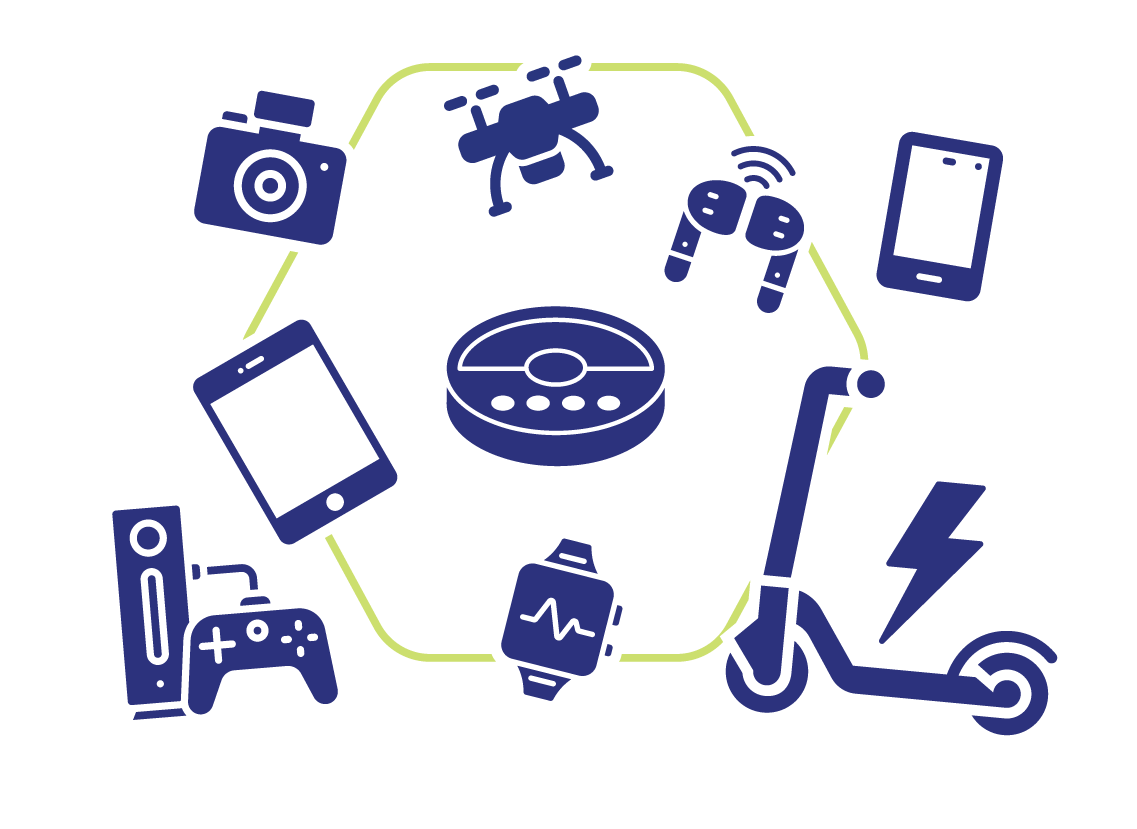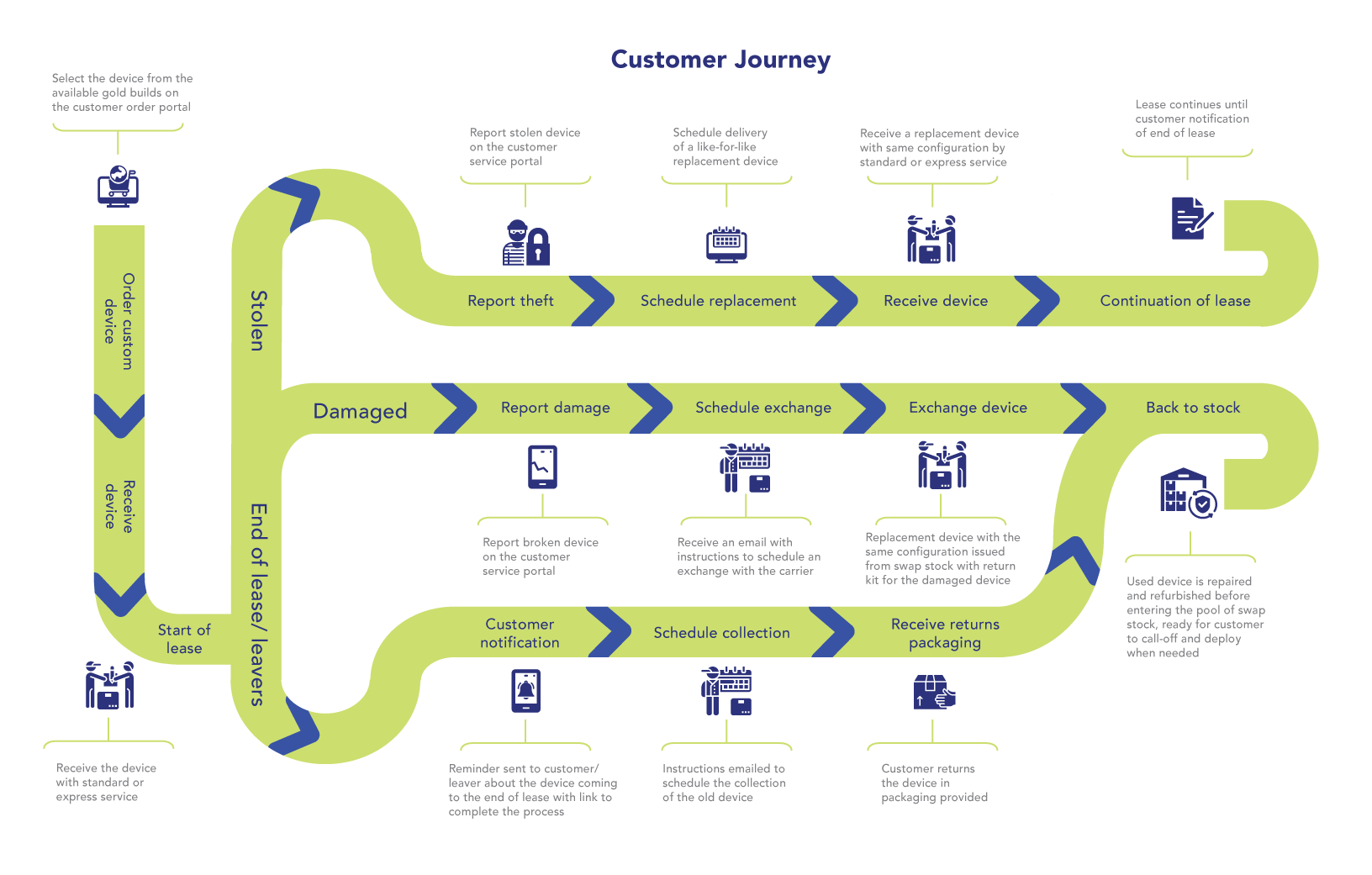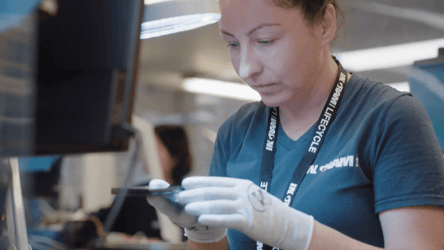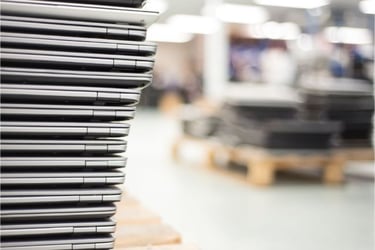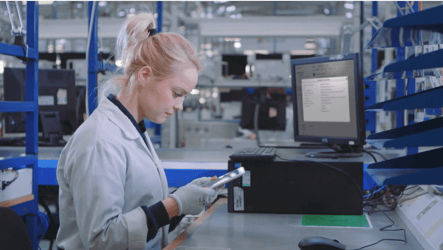Are you looking to explore the reasons behind the growth in popularity of Device as a Service and leasing models?
Ingram Micro Lifecycle works with technology and IT industry businesses to provide reverse logistics and lifecycle services. We support customers with DaaS and leasing programs. The Ingram Micro Financial Solutions division is on hand to support customer financing.
In this article, we discuss 6 key factors influencing consumers and businesses to begin subscriptions for products and services instead of making single ad-hoc purchases.
Market trends and changes
The leasing market is growing. In 2021, Finance & Leasing Association members provided £132 billion in new finance to UK businesses, households, and the public sector. This amount grew in 2022 to £148 billion.
The global leasing market is expected to reach a value of $2.4 trillion in 2026, rising from $1.32 trillion in 2021.
Renting products isn’t new. Physical mediums such as DVDs, books, and CDs have fallen in popularity as services such as Netflix, Kindle Unlimited, and Spotify become more attractive.
98% of consumers subscribe to a streaming service of some kind.
Financing a new or second-hand car involves a similar process. In each of these cases, someone else owns the product, but you pay a fee to use it.
We outline below various changes in the market and consumer behavior that influence the leasing market.
1. Attractive subscriptions
How many subscriptions do you currently pay for? Think film, audio, medical prescriptions, education… For television and film alone, you may have over half a dozen subscriptions.
These all add up. £277 per month is spent by consumers on product rental or subscription.
Following the global crisis of COVID-19, more people sought alternative ways of accessing services and everyday essentials. This led to an increase in subscriptions.
For example, for a regular subscription fee, you can:
- access educational courses online that can earn you qualifications
- receive medicines delivered to your door
- remove the worry of planning and preparing meals or finding new recipes to try
- watch nearly new film releases
- have a personal shopper pick and send you new clothing choices based on your style preferences and sizing
- be armed with a readily available supply of coffee pods that never run out
You don’t even have to leave the house.
Consumers are more willing to pay an ongoing fee for access to services and products. This shift in mindset also applies to technology and electronic gadgets, including smartphones, small domestic appliances (SDAs), gaming consoles, and e-scooters.
2. Sustainability awareness
Understanding the impacts that manufacturing and human activity have on the environment has led to the term ‘ecoanxiety.’ This refers to the growing concern and negative feelings centered around the state of the environment.
More people are seeking sustainable alternatives and making eco-friendly choices in their everyday lives. This includes shifting from a linear economy to a circular one. Leasing technology products enable this as the consumer returns the device once their subscription is over. The device is then repaired and refurbished to go on lease to the next user.
31% of consumers will rent rather than buy products because of the decreased environmental impact.
3. Increased demand
Consider that over 91% of the world’s population owns a mobile phone. That equates to over 7 billion devices in circulation.
With social and political issues that affect supply chains, this level of demand can become unsustainable. This means that buying new devices is not always easy or possible.
This can also be said for less affluent communities that don’t have the disposable income to purchase brand-new devices. Increased costs of living will affect spending, particularly on what may be seen as luxury, rather than necessary, purchases.
When purchasing devices isn’t possible or is less appealing, consumers will seek more affordable alternatives. Examples include buying refurbished, lower-cost devices or changing from a high upfront cost to smaller monthly payments.
Enter subscription payments.
4. Product diversity & accessibility
In a snowball effect, the volume of retailers and providers offering subscription models has increased. As we touched on above, you can subscribe to a great variety of products, all from the comfort of your home.
Ease of access has never been better with the range continually diversifying.
As one product type is offered in the market, competitors must try to offer a more lucrative or attractive option. Businesses benefit from a steady cash flow while consumers have the convenience and typically cost reductions.
5. Lifetime support
Subscription models often include in-life support.
If you lease technology, such as a coffee machine, for example, your monthly subscription costs may entitle you to online or telephone technical assistance.
You’re covered should there be an issue, with the provider arranging an exchange if necessary. The providers need to be sure they’ve got competent partners in place to offer effective lifecycle management services.
Keeping the customer happy is in the best interests of the business. It costs five times the financial investment to find a new customer than it does to retain a current one.
Providing this support improves the possibility of customer retention and also their satisfaction. It keeps the product functioning for as long as possible, aiding sustainability.
If the product is to be returned at the end of the subscription, repair and refurbishment services ensure it can be leased out again. This prolongs the life of the product, keeping it from becoming e-waste when viable.
6. Hybrid and remote working
Flexible approaches to work are becoming more normal and accepted. With a war for talent raging, employers need to offer appealing benefits and a healthy work attitude.
With more staff located remotely, onboarding and recovering devices, as well as offering in-life support, needs to be agile. Employees need to receive technical support for their devices wherever they work from.
This needs to be swift and responsive to minimize downtime and ensure maximum productivity.
As there are multiple places where devices need to be sent, rather than single office spaces, the logistics of managing inventory can be an additional pressure on IT teams.
Acquiring devices through subscription models can alleviate this pressure as the management is taken away from internal teams and instead organized by the provider.
Through Device as a Service, 24/7 technical support can be given through a dedicated employee portal, so this has the added benefit of freeing up more of the IT team’s time to be strategic.
What products could you lease?
There are several benefits to subscribing to a product through the Device as a Service model, and many people are shifting away from ownership of goods. Perhaps you’re already a subscriber to various services.
Ingram Micro Lifecycle is on hand to help customers looking to either set up a subscription model for their products or those wanting to become subscribers.
Get in touch with our team today to begin today.
Continued reading
Browse the articles below to discover more about Device as a Service:








